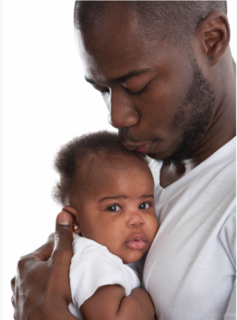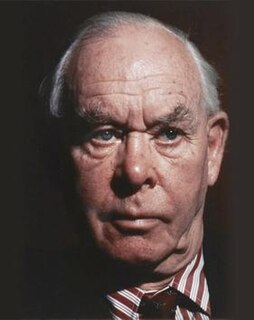Related Research Articles

Parenting or child rearing promotes and supports the physical, emotional, social, and intellectual development of a child from infancy to adulthood. Parenting refers to the intricacies of raising a child and not exclusively for a biological relationship.

Donald Woods Winnicott was an English paediatrician and psychoanalyst who was especially influential in the field of object relations theory and developmental psychology. He was a leading member of the British Independent Group of the British Psychoanalytical Society, President of the British Psychoanalytical Society twice, and a close associate of Marion Milner.

Object relations theory in psychoanalytic psychology is the process of developing a psyche in relation to others in the childhood environment. It designates theories or aspects of theories that are concerned with the exploration of relationships between real and external people as well as internal images and the relations found in them. It maintains that the infant's relationship with the mother primarily determines the formation of its personality in adult life. Particularly, the need for attachment is the bedrock of the development of the self or the psychic organization that creates the sense of identity.

A maternal bond is the relationship between a mother and her child. While typically associated with pregnancy and childbirth, a maternal bond may also develop in cases where the child is unrelated, such as an adoption.

Edward John Mostyn Bowlby, CBE, FRCP, FRCPsych was a British psychologist, psychiatrist, and psychoanalyst, notable for his interest in child development and for his pioneering work in attachment theory. A Review of General Psychology survey, published in 2002, ranked Bowlby as the 49th most cited psychologist of the 20th century.

Attachment in children is "a biological instinct in which proximity to an attachment figure is sought when the child senses or perceives threat or discomfort. Attachment behaviour anticipates a response by the attachment figure which will remove threat or discomfort". Attachment also describes the function of availability, which is the degree to which the authoritative figure is responsive to the child's needs and shares communication with them. Childhood attachment can define characteristics that will shape the child's sense of self, their forms of emotion-regulation, and how they carry out relationships with others. Attachment is found in all mammals to some degree, especially primates.
Co-regulation is a term used in psychology. It is defined most broadly as a "continuous unfolding of individual action that is susceptible to being continuously modified by the continuously changing actions of the partner". An important aspect of this idea is that co-regulation cannot be reduced down to the behaviors or experiences of the individuals involved in the interaction. The interaction is a result of each participant repeatedly regulating the behavior of the other. It is a continuous and dynamic process, rather than the exchange of discrete information.
Cupboard love is a popular learning theory of the 1950s and 1960s based on the research of Sigmund Freud, Anna Freud, Melanie Klein and Mary Ainsworth. Rooted in psychoanalysis, the theory speculates that attachment develops in the early stages of infancy. This process involves the mother satisfying her infant's instinctual needs, exclusively. Cupboard love theorists conclude that during infancy, our primary drive is food which leads to a secondary drive for attachment.

Daniel N. Stern was a prominent American psychiatrist and psychoanalytic theorist, specializing in infant development, on which he had written a number of books — most notably The Interpersonal World of the Infant (1985).

The Interpersonal World of the Infant (1985) is one of the most prominent works of psychoanalyst Daniel N. Stern, in which he describes the development of four interrelated senses of self. These senses of self develop over the lifespan, but make significant developmental strides during sensitive periods in the first two years of life. The mother or other primary attachment figure plays a critical role in helping the infant with this developmental process.
Attachment-based therapy applies to interventions or approaches based on attachment theory, originated by John Bowlby. These range from individual therapeutic approaches to public health programs to interventions specifically designed for foster carers. Although attachment theory has become a major scientific theory of socioemotional development with one of the broadest, deepest research lines in modern psychology, attachment theory has, until recently, been less clinically applied than theories with far less empirical support. This may be partly due to lack of attention paid to clinical application by Bowlby himself and partly due to broader meanings of the word 'attachment' used amongst practitioners. It may also be partly due to the mistaken association of attachment theory with the pseudo-scientific interventions misleadingly known as attachment therapy. The approaches set out below are examples of recent clinical applications of attachment theory by mainstream attachment theorists and clinicians and are aimed at infants or children who have developed or are at risk of developing less desirable, insecure attachment styles or an attachment disorder.
The strange situation is a procedure devised by Mary Ainsworth in the 1970s to observe attachment in children, that is relationships between a caregiver and child. It applies to children between the age of nine and 30 months. Broadly speaking, the attachment styles were (1) secure and (2) insecure. Later, Mary Main and her husband Erik Hesse introduced the 3rd category, disorganized. The procedure played an important role in the development of attachment theory.
True self and false self are psychological concepts, originally introduced into psychoanalysis in 1960 by Donald Winnicott. Winnicott used true self to describe a sense of self based on spontaneous authentic experience and a feeling of being alive, having a real self. The false self, by contrast, Winnicott saw as a defensive façade, which in extreme cases could leave its holders lacking spontaneity and feeling dead and empty, behind a mere appearance of being real.
Patricia McKinsey Crittenden is an American psychologist known for her work in the development of attachment theory and science, her work in the field of developmental psychopathology, and for creation of the Dynamic-Maturational Model of Attachment and Adaptation (DMM).

Maternal sensitivity is a mother's ability to perceive and infer the meaning behind her infant's behavioural signals, and to respond to them promptly and appropriately. Maternal sensitivity affects child development at all stages through life, from infancy, all the way to adulthood. In general, more sensitive mothers have healthier, more socially and cognitively developed children than those who are not as sensitive. Also, maternal sensitivity has been found to affect the person psychologically even as an adult. Adults who experienced high maternal sensitivity during their childhood were found to be more secure than those who experienced less sensitive mothers. Once the adult becomes a parent themselves, their own understanding of maternal sensitivity will affect their own children's development. Some research suggests that adult mothers display more maternal sensitivity than adolescent mothers who may in turn have children with a lower IQ and reading level than children of adult mothers.

Parental experience, as well as changing hormone levels during pregnancy and postpartum, cause changes in the parental brain. Displaying maternal sensitivity towards infant cues, processing those cues and being motivated to engage socially with her infant and attend to the infant's needs in any context could be described as mothering behavior and is regulated by many systems in the maternal brain. Research has shown that hormones such as oxytocin, prolactin, estradiol and progesterone are essential for the onset and the maintenance of maternal behavior in rats, and other mammals as well. Mothering behavior has also been classified within the basic drives. Less is known about the paternal brain, but changes in the father's brain occur alongside the mother once the offspring is born.
Separation anxiety disorder (SAD) is an anxiety disorder in which an individual experiences excessive anxiety regarding separation from home and/or from people to whom the individual has a strong emotional attachment. Separation anxiety is a natural part of the developmental process. It is most common in infants and little children, typically between the ages of six to seven months to three years, although it may pathologically manifest itself in older children, adolescents and adults. Unlike SAD, normal separation anxiety indicates healthy advancements in a child's cognitive maturation and should not be considered a developing behavioral problem.
Psychodynamic Therapy with Infants and Parents aims to relieve emotional disturbances within the parent(s), the baby, and/or their interaction, for example, postnatal depression and anxiety, infant distress with breastfeeding and sleep, and attachment disorders. It rests on attachment theory and psychoanalysis. Sigmund Freud suggested that a modification of his method could be applied to children, and child analysis was introduced in the 1920s by [Anna Freud].., [Melanie Klein], and Hermine Hug von Hellmuth. Klein speculated on infantile experiences to understand her patients' disorders but she did not practice PTIP. Donald Winnicott, a pediatrician and analyst, focused on the mother-baby interplay in his theorizing and his brief parent-child consultations, but he did not work with PTIP.
Internal working model of attachment is a psychological approach that attempts to describe the development of mental representations, specifically the worthiness of the self and expectations of others' reactions to the self. This model is a result of interactions with primary caregivers which become internalized, and is therefore an automatic process. John Bowlby implemented this model in his attachment theory in order to explain how infants act in accordance with these mental representations. It is an important aspect of general attachment theory.
Beatrice Beebe is a clinical psychologist known for her research in attachment and early infant-parent communication. Her work helped established the importance of non-verbal communication in early child development. She is a Clinical Professor of Medical Psychology at the College of Physicians & Surgeons, Columbia University and the director of the Communications Science Lab at the New York State Psychiatric Institute (NYSPI).
References
- ↑ Winnicott, D.W (1965). "The Maturational Processes and the Facilitating Environment: Studies in the Theory of Emotional Development". The International Psych-Analytic Library.
- ↑ Karen M. Finello, The handbook of training and practice in infant and preschool health (2005) p. 96
- ↑ Stern, D. N. (1995). The motherhood constellation: A unified view of parent-infant psychotherapy. New York: Basic Books.
- ↑ Franklyn Sills, Being and Becoming (2008) p. 122
- ↑ Sills, p. 122
- ↑ Stern, D. (1998). Mothers’ Emotional Needs. Pediatrics, 102, 1250-1252.
- ↑ Markova, G. & Legerstee, M. (2006). Contingency, imitation and affect sharing: foundations of infants social awareness.Developmental Psychology, 42, 132-141.
- ↑ Sills, p. 122
- ↑ Daniel N. Stern, The Motherhood Constellation (London 1998) p. 112
- ↑ Stern, Constellation p. 112